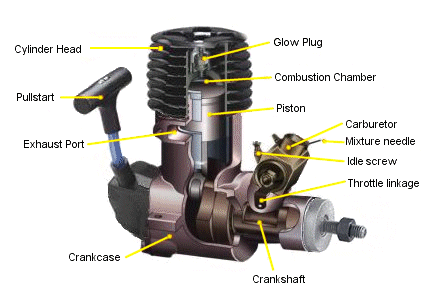Hi everyone!!
I was looking for the injection/ignition parameters of a nitro engine that burns a 90/10 mixture of nitromethane and methanol
-Which kind of injectors are used and what's the pressure jump across them?
- What is the pressure in the chamber at the moment of combustion?
-Spark plug or glow plug?
-What is the energy and/or power absorbed by the spark/glow plug and how long does it stay on?
-Bonus question: how much spark energy does a 90/10 NM/methanol mixture required to ignite?
Thanks to everyone who will contribute
I was looking for the injection/ignition parameters of a nitro engine that burns a 90/10 mixture of nitromethane and methanol
-Which kind of injectors are used and what's the pressure jump across them?
- What is the pressure in the chamber at the moment of combustion?
-Spark plug or glow plug?
-What is the energy and/or power absorbed by the spark/glow plug and how long does it stay on?
-Bonus question: how much spark energy does a 90/10 NM/methanol mixture required to ignite?
Thanks to everyone who will contribute


